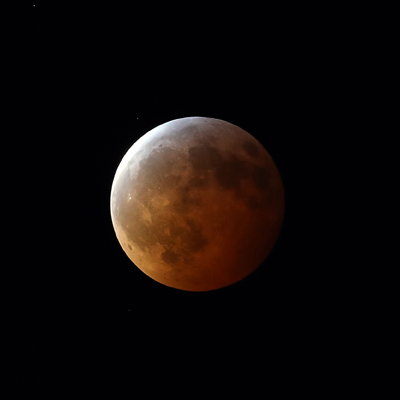
Total Lunar Eclipse of 2019
During a total lunar eclipse, the shadow of the earth passes over and completely covers the face of the moon. Some sunlight passing through the earth’s atmosphere is refracted toward the moon, casting a reddish glow on the moon’s surface.
The lunar eclipse of 2019 was given the appellation “Super Blood Wolf Moon.”
“Super” refers to the moon’s apparent size. The full moon looked bigger to the eye than normal because it was near its closest approach to earth in its elliptical orbit.
“Blood” describes the moon’s apparent color during the eclipse. The tint was caused by sunlight refracted by the earth’s atmosphere, transforming the moon’s normally gray countenance.
“Wolf” is the traditional name for the full moon in January. The Old Farmer’s Almanac reported Native American and early European colonists used the term when they would hear wolves howling at night, in hunger from the scarcity of food in the long winter.
The eclipse of January 20-21, 2019, lived up to the name. While the moon appeared larger than usual, the evening also was colder than usual with air temperatures recorded at -4˚ Fahrenheit (-20 ˚ Celsius) here in Detroit.
Designed to work at temperatures above freezing, the camera stopped working after only a few minutes in the field. A spare battery kept inside a warm jacket pocket powered the camera for a final series of exposures that yielded the image.
